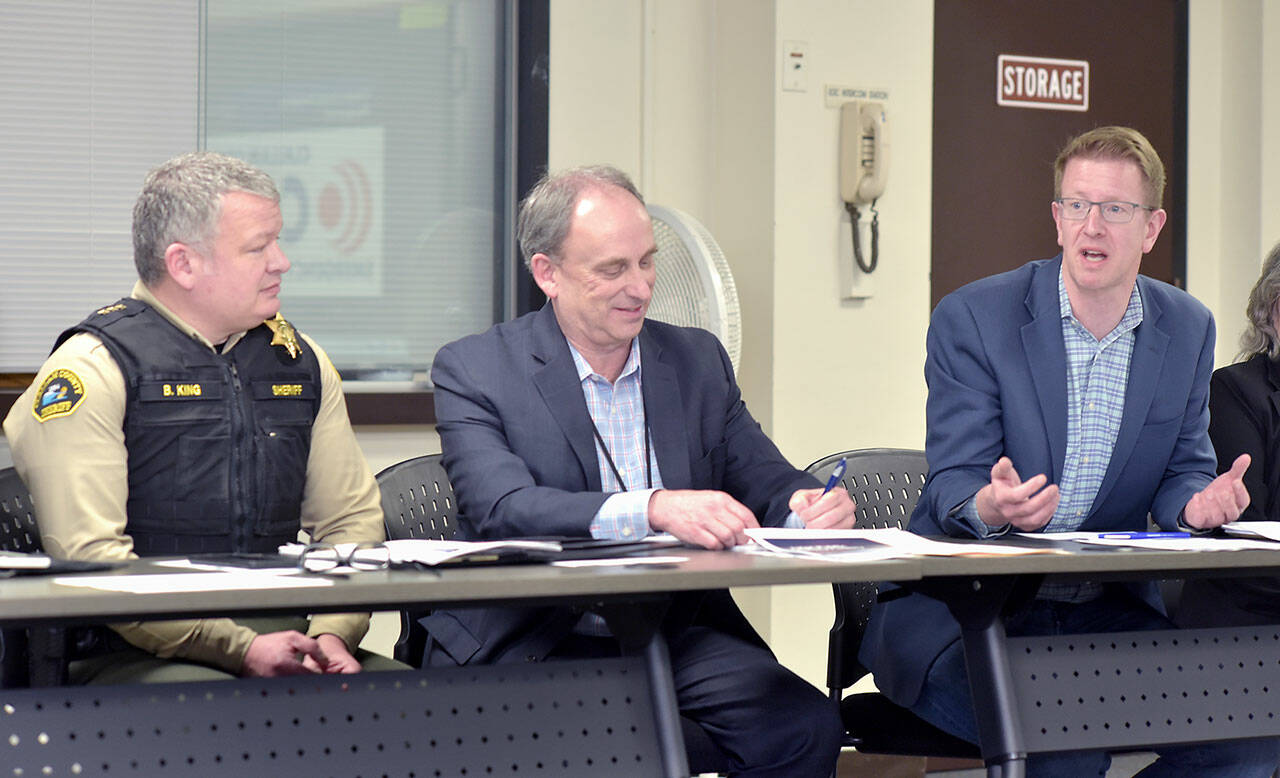A new emergency operations center in Clallam County still needs about $10 million in funding to complete the project, although it’s currently unknown from where that money will come.
“We’re running behind where we want it to be,” Clallam County administrator Todd Mielke said. “Right now, this is projected to be about a $20 million project.”
Speaking during a meeting with U.S. Rep. Derek Kilmer, D-Gig Harbor, and emergency services providers in the county on March 14, Mielke said the county has secured roughly $10.3 million for the project, about 70 percent of which comes from two state Department of Commerce grants.
As for the remaining $10 million, Mielke said the county is looking at all available options.
“We’ll go wherever it’s available,” he said. “I think the discussion you heard today is there’s a lot of miscellaneous grants at the federal level. We’re also looking at any opportunities at the state level as well.”
Of the two Commerce grants, one is for pre-construction and design and the other is for the actual construction phase, which has an expiration date of June 30, 2025. That’s about the time the county hopes to have its design work finished, and Mielke said the county will work with the designer and Commerce to ensure the grant remains secured.
The project also received a Community Project Funding grant of $3 million in 2022.
Kilmer’s office is able to submit another 15 project proposals for the next round of grants, but he said it’s not clear if a project that has received a Community Project Funding grant in the past is eligible for another.
“Community Project Funding is only two or three years old,” said Kilmer, who represents Washington’s 6th Congressional District, which includes Clallam and Jefferson counties.
“We’ll have to check in with the (U.S. House of Representatives) Appropriations Committee and see what they say about sort of seeking a second grant for the same project or same organization.”
Community Project Funding grants, formerly known as earmarks, are grants awarded to specific projects within a Congressional district.
Mielke said the emergency operations center is currently projected to cost about $20 million, but costs are rising monthly.
The center was just one of many projects discussed last week, as Kilmer met with local officials to discuss potential funding opportunities for various needs related to emergency and disaster response.
The meeting included representatives from Clallam County; the City of Port Angeles; the Lower Elwha Klallam Tribe; the Jamestown S’Klallam Tribe; the Washington Emergency Management Division; the Federal Emergency Management Agency, and the American Red Cross.
Clallam County and the various jurisdictions within it have a range of needs related to disaster response, said Justine Chorley, emergency management program director with Clallam County, and many of the specific requests from local jurisdictions could apply countywide.
Smaller needs such as backup generators and disaster supplies are needed throughout the county, Chorley said, as are larger construction needs such as seismic retrofitting and storage facilities.
Clallam County has emergencies such as wildfires and landslides annually — “our conditions are getting more and more favorable to fires,” Chorley said — but the largest concern for emergency planners is a major earthquake and following tsunami.
Just off the coast is a seismic area known as the Cascadia Subduction Zone, which experts have said could produce a magnitude 8 earthquake or greater with shaking that lasts up to six minutes, plus a tsunami hitting the coastline within 15-20 minutes.
“In a Cascadia-type event, we’re really concerned about the stability of our bridges,” Chorley said.
Kilmer encouraged the various representatives to reach out to his office and said there are a range of federal grants available that could help address those issues.
“The good news about the passage of some of these big bills like the Bipartisan Infrastructure Law is they are targeting resources to communities like ours to meet needs,” he said after the meeting.
The 2021 Infrastructure Investment and Jobs Act, otherwise known as the Bipartisan Infrastructure Law, and the 2022 Inflation Reduction Act approved more than $1 trillion in spending, much of which is now ready to be allocated, Kilmer said.
“We’ve already had a handful of the folks in the room follow up and say they want to pursue some of the grant opportunities that exist for the need that exists.”



